All Alone In Alentejo
Alentejo, Portugal
by Sarah Shuckburgh
Sarah Shuckburgh discovers
Portugal’s sparse southern region, where marble has been
mined for centuries and visitors are few.
Our week in Portugal’s Alentejo region took us to two
rarely-visited destinations - inland to Vila Viçosa, and
south to the Costa Vicentina natural park. We hardly saw
another tourist all week.

In summer, temperatures in the Alentejo reach 40 degrees,
and winters can be perishing, but our springtime visit was
perfect. From Lisbon airport, my husband and I drove east
across Alto Alentejo, through groves of twisted olives, and
between boulder-strewn pastures grazed by sheep and tawny
cows.
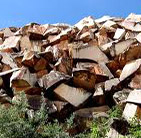 Almond orchards shimmered with pink blossom. Roads were
lined with gnarled cork oaks, their stripped trunks in
shades of red and black. Almond orchards shimmered with pink blossom. Roads were
lined with gnarled cork oaks, their stripped trunks in
shades of red and black.
Cork is a major export, and we were crossing the world’s
largest stretch of montado - cork woodland and pasture. Trim
vineyards surrounded single-storey whitewashed farmhouses,
many made of mud and clay, with tiny windows to protect
against the summer heat, and hefty chimneys against winter
chill. Storks guarded their untidy nests on the top of
telegraph poles.
As we approached Vila Viçosa, we noticed hillsides littered
with jumbled heaps of stippled marble - huge pale chunks,
slabs, chips and white dust.
 Vila Viçosa is a small, glittering city in which everything
is made of marble - the magnificent Duke’s Palace has a
blindingly bright marble façade 110 metres long, overlooking
a gleaming square of marble cobbles, but even modest streets
have sparkling marble-chip pavements. Vila Viçosa is a small, glittering city in which everything
is made of marble - the magnificent Duke’s Palace has a
blindingly bright marble façade 110 metres long, overlooking
a gleaming square of marble cobbles, but even modest streets
have sparkling marble-chip pavements.
Locals rest on marble benches outside houses with marble
doorsteps, lintels and windowsills. Walls are painted with
marble-chip whitewash. My guidebooks disagree on the meaning
of ‘Viçosa’ - one translates it as ‘shade’- surely an
inappropriate description of this dazzling town. The other,
which I prefer, defines it as an archaic term for grace and
beauty.
 Trains haven’t stopped at Vila Viçosa for 20 years, and the
station house is now a museum of marble. We startled the
curator - we were her only visitors for days. Although we
explained with embarrassment that we spoke scarcely any
Portuguese, she insisted on giving us a personal tour
involving a lot of long words and an interesting (but alas
incomprehensible) video. Trains haven’t stopped at Vila Viçosa for 20 years, and the
station house is now a museum of marble. We startled the
curator - we were her only visitors for days. Although we
explained with embarrassment that we spoke scarcely any
Portuguese, she insisted on giving us a personal tour
involving a lot of long words and an interesting (but alas
incomprehensible) video.
We managed to grasp that marble has been cut from a 25-mile
swathe of land between Vila Viçosa and Estremoz since Roman
times, but it is not about to run out. Bore-holes show that
the marble is at least 400 meters deep. Most prized is pure
white or pure pink marble, but local marble is also
streaked, tiger-striped, speckled or yellowish.
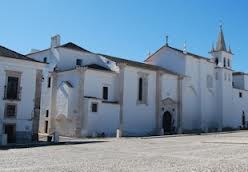 In Vila Viçosa’s long, sloping main square, we found the
marble pavements strewn with wind-fallen oranges. After some
coffee and delicious custard tarts at Pastelaria Azul, we
climbed to the imposing hilltop castle. The 13th-century
walls surround a maze of ancient cobbled streets, a carved
pillory where criminals were shackled, and a lovely church
with 15th-century azujelo tiles, hand-painted in traditional
blue and white. Inside the castle we found displays of local
archaeology - dating from Paleolithic times - and of
hunting. In Vila Viçosa’s long, sloping main square, we found the
marble pavements strewn with wind-fallen oranges. After some
coffee and delicious custard tarts at Pastelaria Azul, we
climbed to the imposing hilltop castle. The 13th-century
walls surround a maze of ancient cobbled streets, a carved
pillory where criminals were shackled, and a lovely church
with 15th-century azujelo tiles, hand-painted in traditional
blue and white. Inside the castle we found displays of local
archaeology - dating from Paleolithic times - and of
hunting.
Unlike many Brits, I love stuffed animals, and here were
some nice moth-eaten examples of local prey - wolves, bears,
foxes, genet, Iberian lynx and wild boar.
 The castle was home to the Braganzas until 1501 when the
fourth Duke began to build his magnificent marble palace -
one of Portugal’s largest and grandest, and an enduring
symbol of Vila Viçosa’s Golden Age. After pausing at the
tiny Pastelaria Pão Doce to try some more cakes (pasteis de
toucinho, made with pork fat), we felt ready to tackle the
Paço Ducal. Many treasures were removed to Lisbon when the
8th Duke became King Joao IV in 1640, but the palace still
contains splendid 17th-century frescoes, Flemish tapestries,
huge 16th-century Persian carpets, carved furniture and
royal portraits. In the great hall, portraits of 17 Braganza
dukes gaze from the ceiling. I spotted a small painting
which the British gave to Catherine of Braganza on her
return to Portugal after the death of her husband, Charles
II. The castle was home to the Braganzas until 1501 when the
fourth Duke began to build his magnificent marble palace -
one of Portugal’s largest and grandest, and an enduring
symbol of Vila Viçosa’s Golden Age. After pausing at the
tiny Pastelaria Pão Doce to try some more cakes (pasteis de
toucinho, made with pork fat), we felt ready to tackle the
Paço Ducal. Many treasures were removed to Lisbon when the
8th Duke became King Joao IV in 1640, but the palace still
contains splendid 17th-century frescoes, Flemish tapestries,
huge 16th-century Persian carpets, carved furniture and
royal portraits. In the great hall, portraits of 17 Braganza
dukes gaze from the ceiling. I spotted a small painting
which the British gave to Catherine of Braganza on her
return to Portugal after the death of her husband, Charles
II.
After trailing through dozens of sombre state rooms, we were
relieved to enter the intimate quarters of King Carlos and
Queen Amelia. Dom Carlos was a keen naturalist, and his
paintings, books and uniforms give the heavily draped rooms
a personal feel. The king slept here on the night before his
assassination by Republicans in Lisbon in 1908.
His son, Portugal’s last king, Dom Manuel II, was exiled to
England, but bequeathed the Vila Viçosa palace to the
nation, including his important collection of 16th-century
Portuguese books.
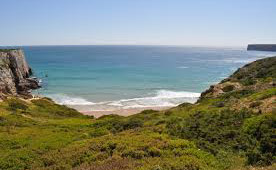 Leaving Vila Viçosa, we spent a few hours in the
well-preserved (but more touristy) medieval town of Evora,
wandering narrow cobbled streets of houses with iron
balconies, and peering through archways into tiled patios.
The cathedral dates from the 12th century, and has the
oldest organ in Europe. We climbed up to the undulating
stone roof, and looked over battlements at 16th-century
gargoyles. After coffee and pasteis de nata - cakes
traditionally baked by nuns - we visited the 15th-century
family chapel of the Dukes of Cadaval, its interior entirely
covered with lovely blue and white tiles. Nearby, stand
fourteen Roman columns with Corinthian tops made of local
marble almost 2000 years ago. Leaving Vila Viçosa, we spent a few hours in the
well-preserved (but more touristy) medieval town of Evora,
wandering narrow cobbled streets of houses with iron
balconies, and peering through archways into tiled patios.
The cathedral dates from the 12th century, and has the
oldest organ in Europe. We climbed up to the undulating
stone roof, and looked over battlements at 16th-century
gargoyles. After coffee and pasteis de nata - cakes
traditionally baked by nuns - we visited the 15th-century
family chapel of the Dukes of Cadaval, its interior entirely
covered with lovely blue and white tiles. Nearby, stand
fourteen Roman columns with Corinthian tops made of local
marble almost 2000 years ago.
 Then we drove south-west to Baixo Alentejo and the Costa
Vicentina, named after St Vincent, the patron saint of
Lisbon. Protected since 1995, this spectacular coastline
offers a huge variety of habitats, with coastal wetlands and
lagoons, salt marshes, small coves, high cliffs,
promontories, dunes of fine sand, woodland, meadows and
scrub.
People have lived here since Paleolithic times, but today’s
population is very small. We were alone on every beach and
cliff-top. Then we drove south-west to Baixo Alentejo and the Costa
Vicentina, named after St Vincent, the patron saint of
Lisbon. Protected since 1995, this spectacular coastline
offers a huge variety of habitats, with coastal wetlands and
lagoons, salt marshes, small coves, high cliffs,
promontories, dunes of fine sand, woodland, meadows and
scrub.
People have lived here since Paleolithic times, but today’s
population is very small. We were alone on every beach and
cliff-top.
Occasionally we came upon a dilapidated information board,
but on each the pictures and writing had rotted away. After
days of sightseeing inland, it was relaxing to stroll,
uninformed, through gorse and heather, letting the breeze
blow away cares, as waves crashed on to the rocks hundreds
of feet below. In the evening, we watched the sun set into
the Atlantic Ocean in a blaze of garish colour.
The Alentejo may be Portugal’s poorest and least populated
region, but the traditional cuisine is wonderful. In Vila
Viçosa, our favourite dish was açorda - a mouthwatering
bread soup with garlic, coriander, olive oil and a floating
poached egg. Here we drank local Alabastro, smooth red and
fruity white, and full-bodied red wines from the
neighbouring marble-town of Borba.
 On the Costa Vicentina, we alternated between two excellent
fishermen’s taverns by a jetty a few miles north of
Zambujeira do Mar, where the daily catch is auctioned. In
each we were the only customers apart from the odd local
courting couple. In O Sacas, a black-garbed grandmother sang
traditional a capella folksongs to a fretful baby as other
members of the extended family sat by the fire. Next door,
at A Barca Tranquitanas, the extended family was smaller,
but the food was equally good. A nostalgic selection of
songs from the 1970s drowned the ubiquitous TV. We ate
açorda de marisco (bread soup with fish), huge quantities of
caldeirada (fish stew), salt cod, and pork with wine and
clams, all washed down with Redondo red and Vidigueira white
wines. On the Costa Vicentina, we alternated between two excellent
fishermen’s taverns by a jetty a few miles north of
Zambujeira do Mar, where the daily catch is auctioned. In
each we were the only customers apart from the odd local
courting couple. In O Sacas, a black-garbed grandmother sang
traditional a capella folksongs to a fretful baby as other
members of the extended family sat by the fire. Next door,
at A Barca Tranquitanas, the extended family was smaller,
but the food was equally good. A nostalgic selection of
songs from the 1970s drowned the ubiquitous TV. We ate
açorda de marisco (bread soup with fish), huge quantities of
caldeirada (fish stew), salt cod, and pork with wine and
clams, all washed down with Redondo red and Vidigueira white
wines.
And several times a day, wherever we were, we joined locals
in a tiny café to guzzle more of those delicious convent
cakes.
GETTING AROUND
Wonderfully empty roads make for leisurely driving. Hire a
car at Lisbon airport.
WHEN TO GO
Avoid the heat of summer inland. Spring and autumn are best.
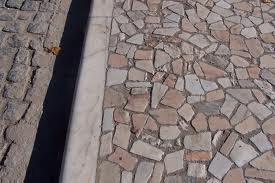 THE INSIDE TRACK THE INSIDE TRACK
Follow the Rota dos Vinhos do Alentejo (Alentejo wine route)
and taste local wines at the vineyards.
Listen out for Alentejo traditional unaccompanied
folk-singing. The song ‘Grândola, Vila Morena’ celebrates
brotherhood in the Alentejo town of Grândola. It became a
revolutionary anthem in 1974, with the start of democratic
rule in Portugal.
Portalegre is the capital city of Alto Alentejo, 60 km north
of Vila Viçosa. Worth visiting for its famous tapestries
which reproduce contemporary paintings.
Monsaraz, 40 km south of Vila Viçosa, is a small, unspoilt
fortified village perched on the border with Spain.
Arraiolos is an ancient village on the N4, on the route from
Lisbon airport to Vila Viçosa, 20 km north of Evora. Famous
since the 12th century for its handwoven carpets (tapetes).
Locals recreate traditional motifs of animals, birds and
flowers, azulejo designs, as well as unique modern patterns.
Look for unusual pottery: Alentejo potters like to employ
new motifs and shapes - lamp-bases or fruit bowls as well as
traditional serving plates, salt tubs or olive dishes.
Cork oak: the Alentejo is the world’s most important cork
producer.
Trees mature for at least 25 years before the bark is cut,
and then careful stripping takes place every 9 years. Look
for the date of the last bark-cutting, daubed on each trunk.
A tree may supply cork for 200 years. Sadly, today the cork
industry is threatened.
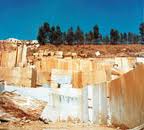 WHAT TO BRING HOME WHAT TO BRING HOME
Cork products, including some unexpected items, such as
handbags
Cured meats
Local cheese, including queijo serpa (sheep’s cheese)
Alentejo wines
Local pottery
Arraiolos carpets.
WHAT TO AVOID
Don’t forget to take a Portuguese dictionary and phrasebook,
or a translation app for your phone. You won’t find many
English speakers in these remote areas.
Avoid walking into doors by remembering that puxe (which
looks and sounds like ‘push’) means ‘pull’.
If you want nightlife and crowds, avoid the Costa Vincentina.
This rugged coast is not for you.
Avoid disappointment in Vila Viçosa’s tiny restaurants by
reserving a table in advance.
First published by the Telegraph
©SarahShuckburgh |